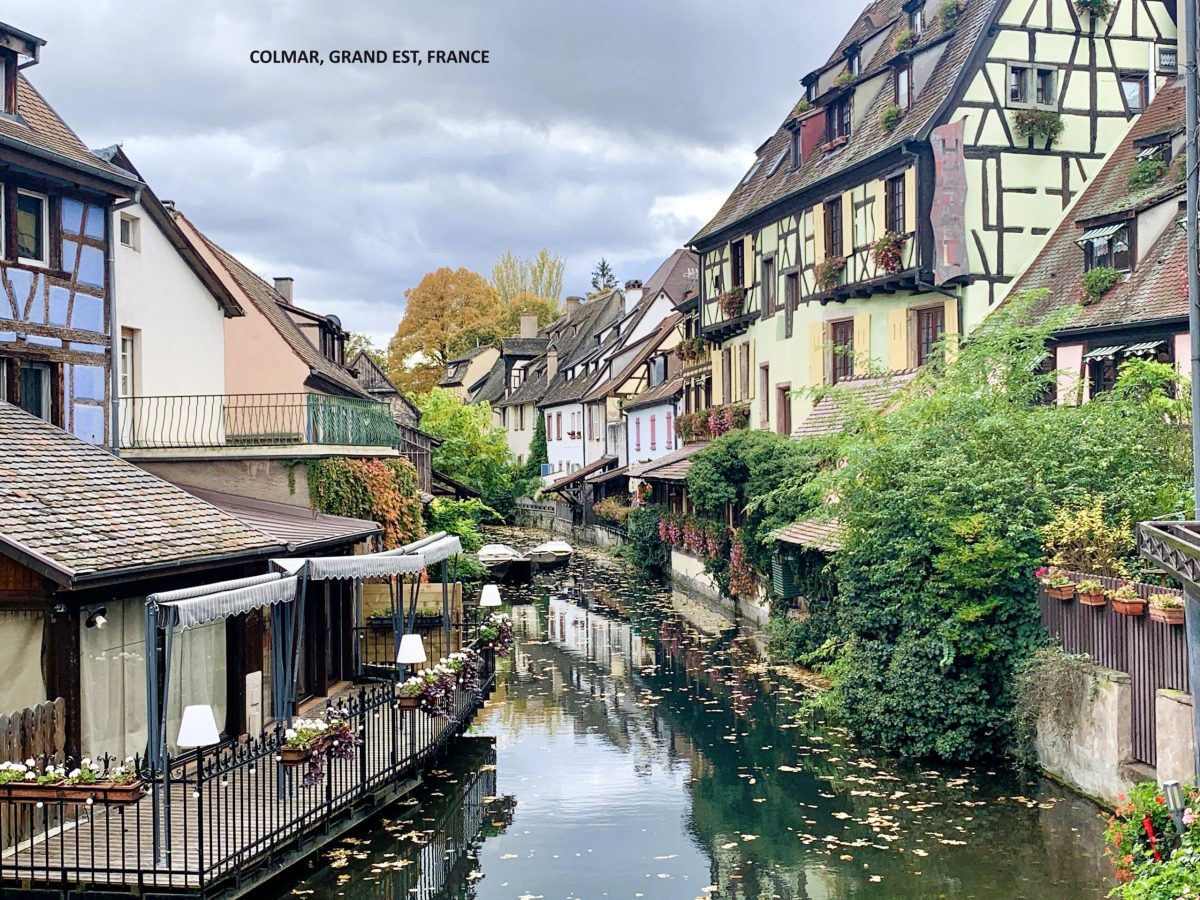Namur (Namen in Dutch), nestled at the confluence of the Meuse and Sambre rivers, was settled well before even the Romans arrived but it came to prominence in medieval times and is now the capital of the province of Namur in the Wallonia Region.
Dominating the city is an enormous fortress, the Citadel. It is supposedly one of the mightiest fortresses in Europe but that would have been only up until medieval times; the Citadel didn’t fare at all well in any the Napoleonic or the First or Second World Wars. You can drive up to the Citadel (there’s plenty of parking) or you can use the cable car system operating out of Namur’s Old Town but, I chose to use one of the many walking routes. After all, this is Belgium and there simply aren’t any tall hills here. It didn’t take long to reach the top but I didn’t stay long. There was a fair underway and far too many visitors for my liking although, at a quieter time, I could have stayed, not because there is anything particularly impressive to see on the hill (it is just massive sprawling fortress) but because of what is underneath it. Napoleon called it ‘the termite mound of Europe’ due to it’s network of underground passages. Some 500 metres have been restored. Now that would have been interesting.

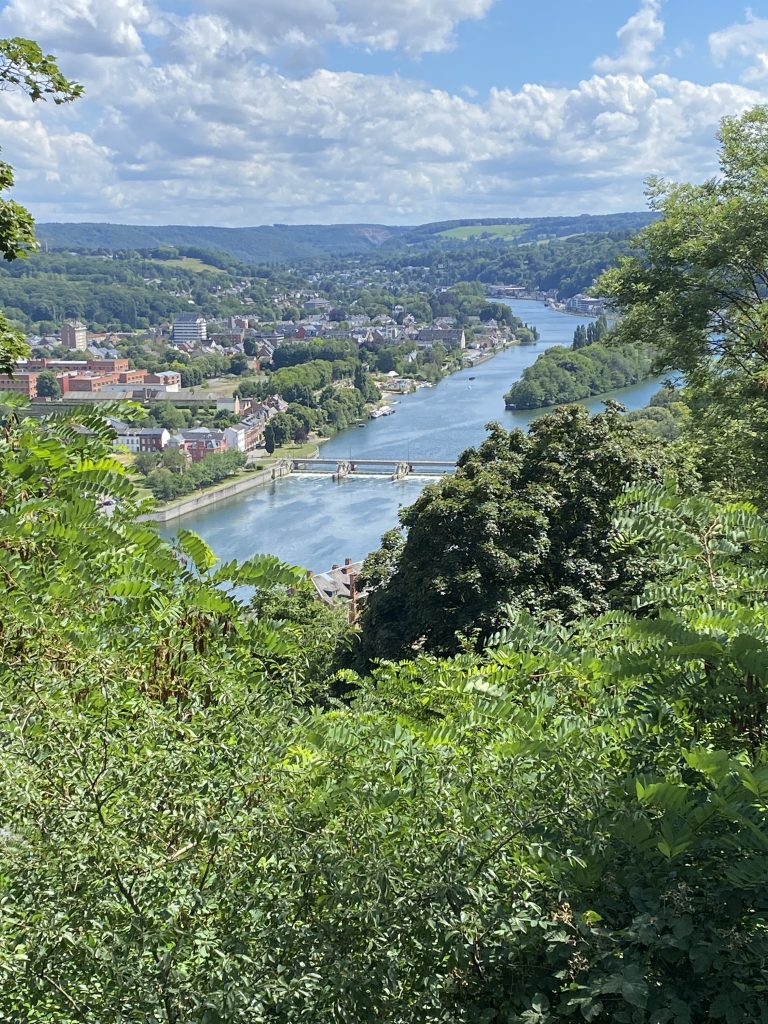
After the Citadel, Namur (at least for me) is about its food and in particular Wallonian Cuisine. The old town is full of cafes and restaurants offering a rich variety of foodstuffs. The foods which most caught my attention (I don’t think local beers qualify as foodstuffs?) were the mustards and the snails (not together I hasten to add). Belgium offers a host of different mustards but the one I like most is local to Namur, Bister’s L’Imperiale. It’s made only with mustard seeds. There are no enhancers nor colourings and it has a robust tangy flavour with just an edge of sweetness which is fabulous with salami. The other food to be sampled in Namur are the snails (I always think they sound more palatable if you use the French word ‘l’escargot’) and l’escargot I am referring to are the petit-gris which are farmed in and around Namur. In fact, the petit-gris has long been the symbol of Namur. Now, l’escargot petit-gris warmed in a little garlic butter… yummm.


So what else is there to say about the city? Our interest was with the old town so, after parking the Van up in a space underneath the Citadel on the Avenue de la Plante, we made our way back along the banks of the River Meuse to where it meets the Sambre and entered the old town through the Rue du Pont. This brought us directly to the town square where the imposing Palais de Congress, previously the stock exchange, stands.
There is a curious group of bronze statues on the square, directly in front of the Palais de Congress – two characters invented by the Belgian cartoonist Jean Legrand (Francwes and Djoseph, sic) have caught two snails; one is imprisoned in a cage and the other is on a lead. This scene is supposedly a reference to Namur’s particularly slow place of life (with the snails being restrained such that they don’t race away). If nothing else, they proved a conversation piece and provided Vanya with a photo opportunity for Beanie.
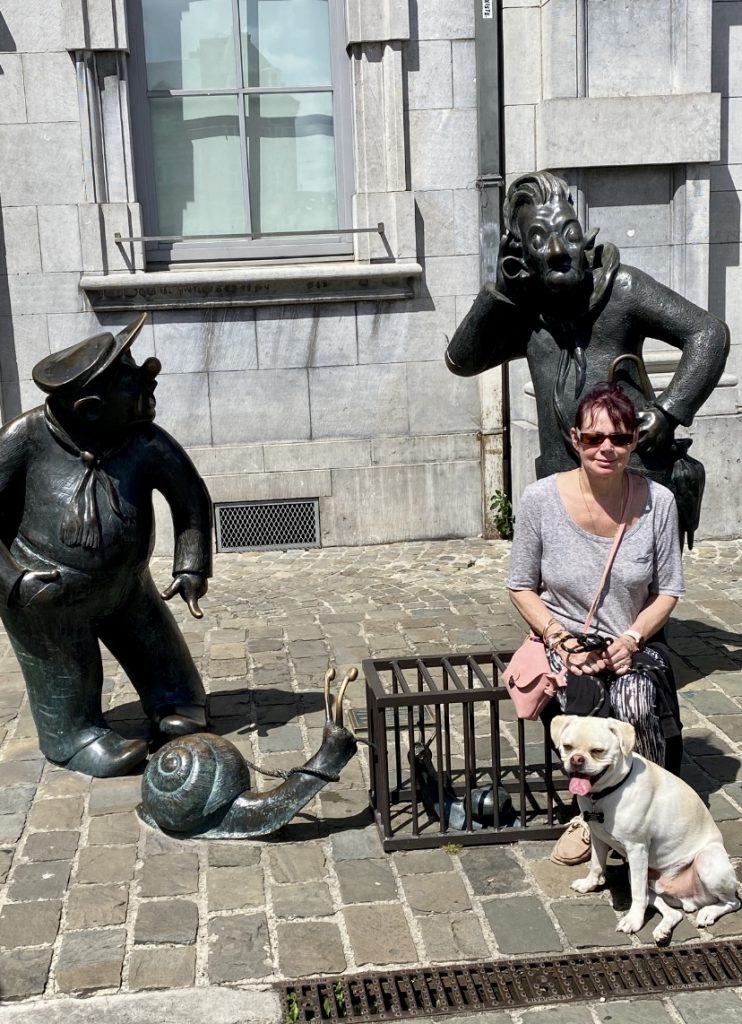
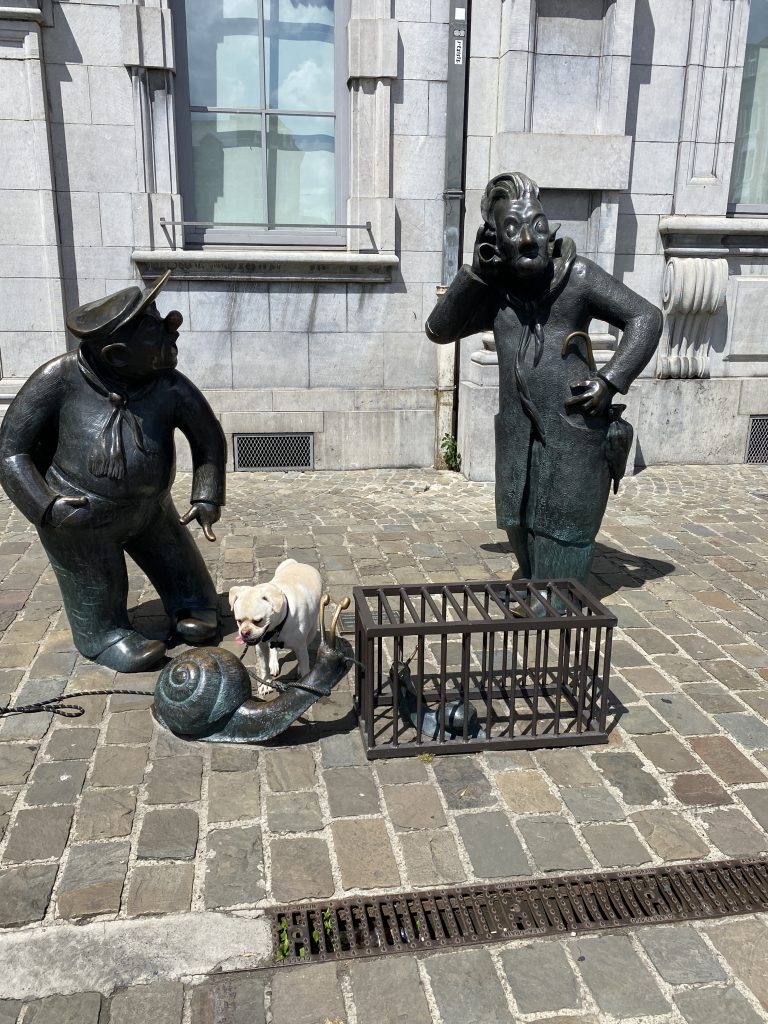
To the west of the Palais de Congress are a jumble of cobbled lanes and squares which are home to a range of fashion boutiques (especially on the Rue de Fer and the Rue de Bruxelles) and countless cafe bar restaurants. This area is our favourite part of the old town. The Baroque Cathedral of St Aubin and the Jesuit Church of St Loup are also located in this part of the old town but I wouldn’t list either building as a ‘must see’.
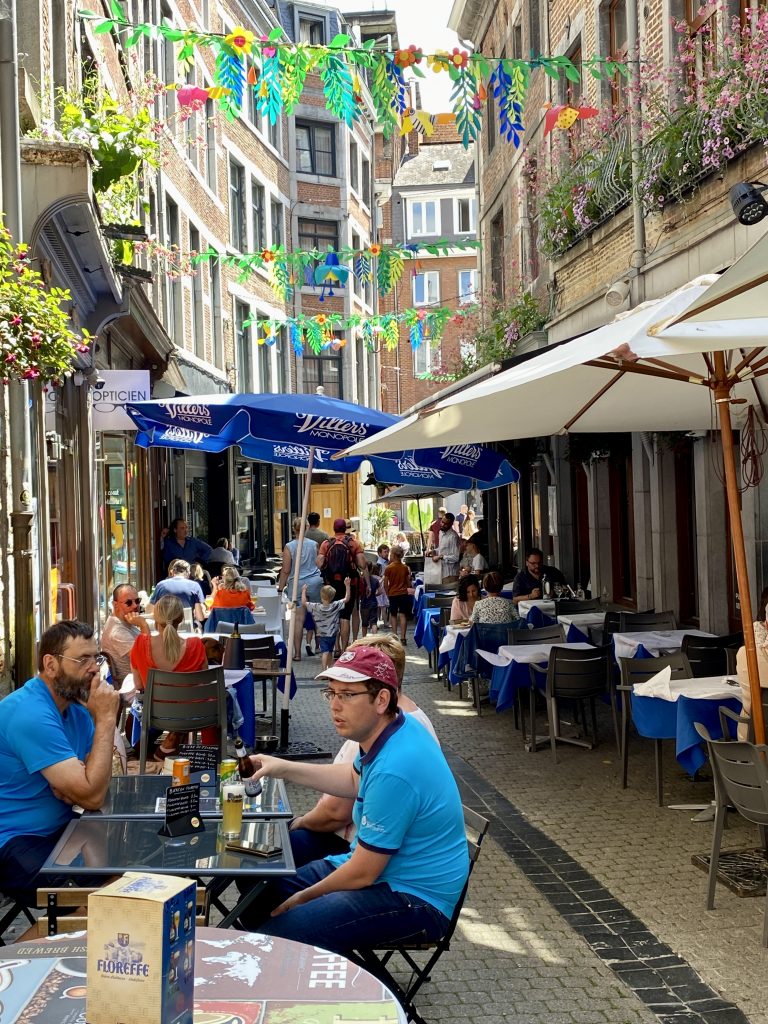
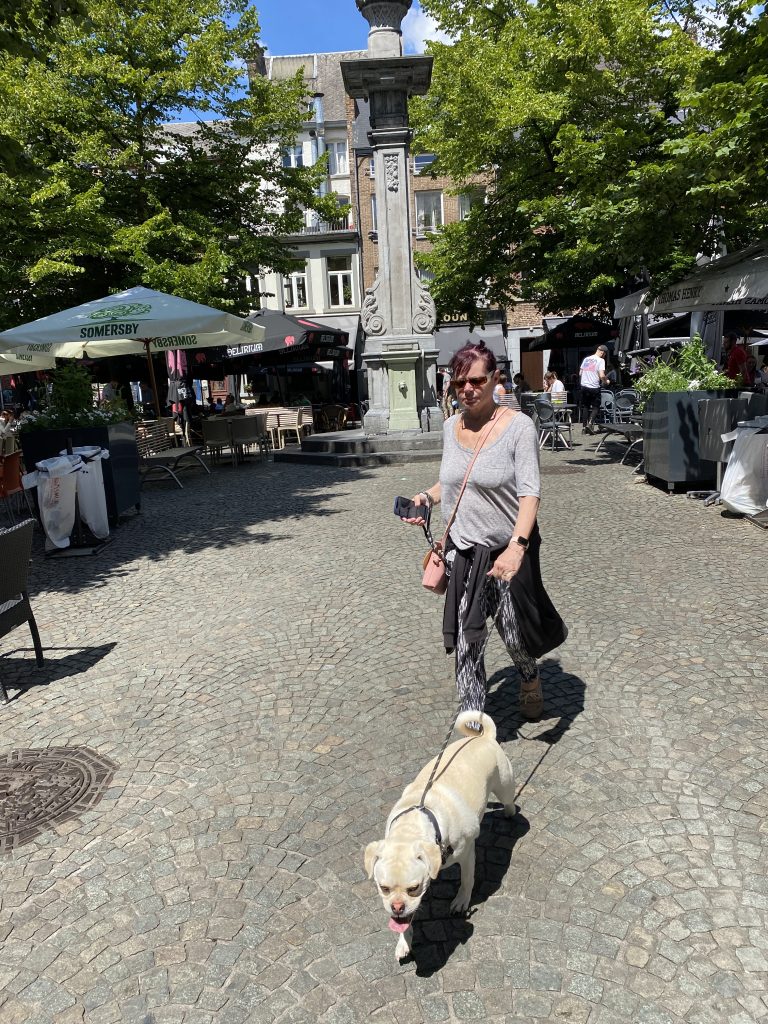
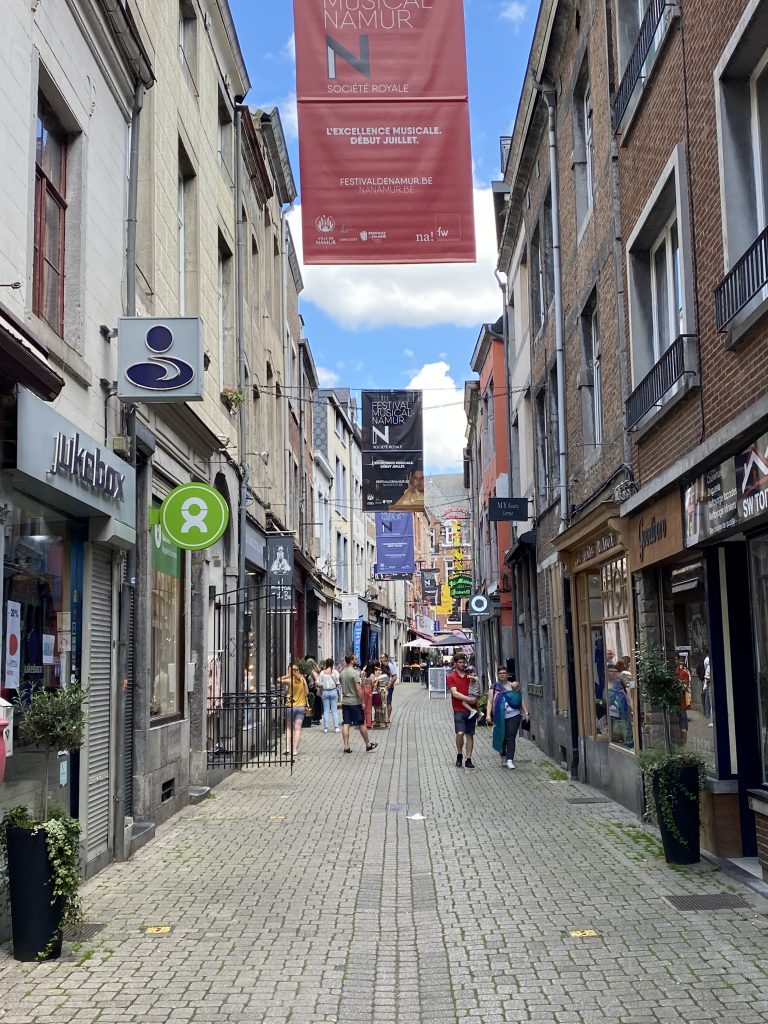
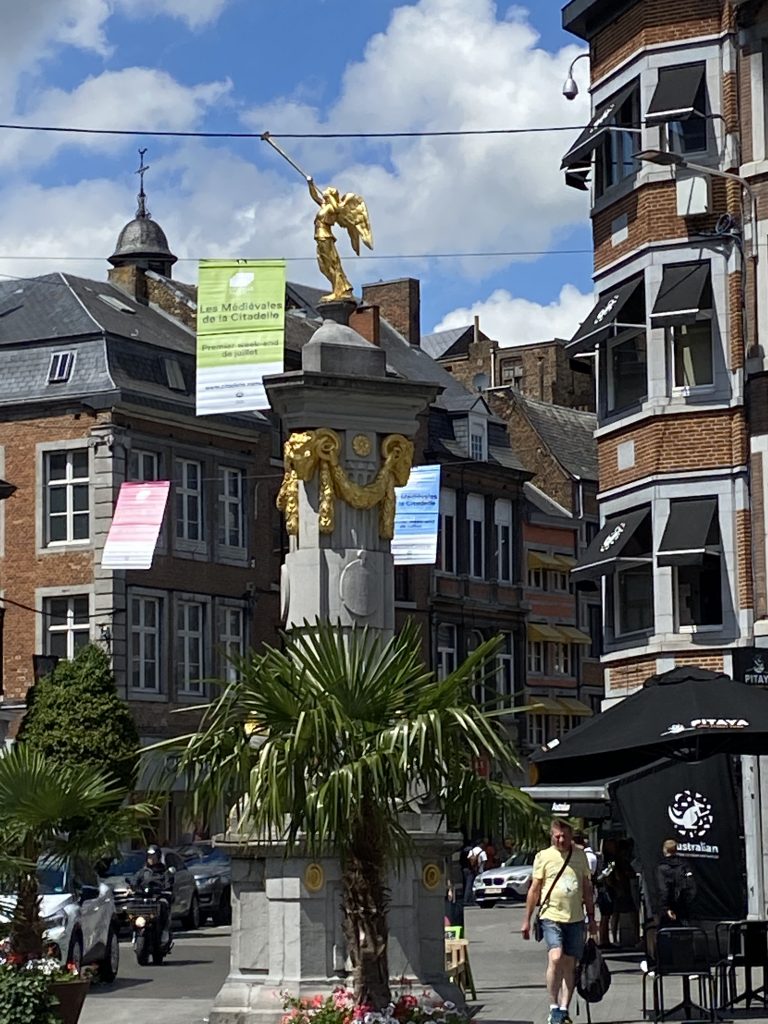
One building I would like to have visited during our visit but didn’t make sufficient time for is the Felicien Rops Museum which is also in the old town. Rops was a prolific and versatile 19th century Belgian artist, born and raised in Namur, who was a pioneer of Belgian comics (although he is perhaps best remembered for his erotic and occult art). Sods law, I read (only after we had departed Namur) that entry to the museum is free on the first Sunday of every month – that was today! Next time…

